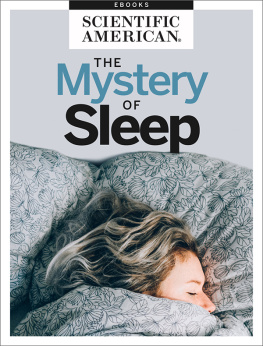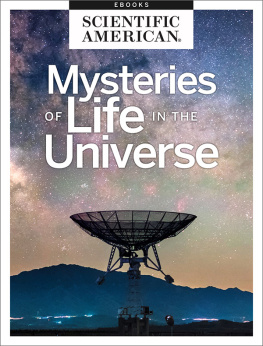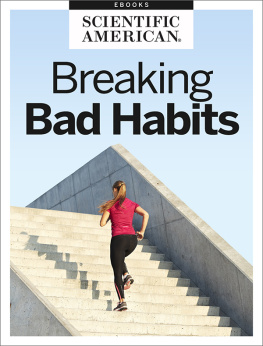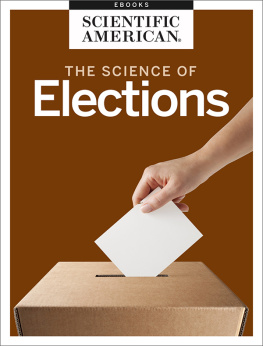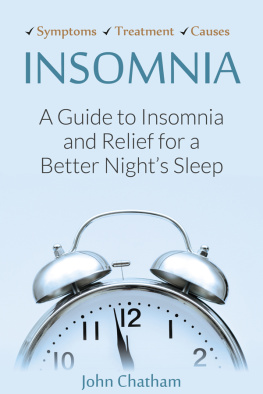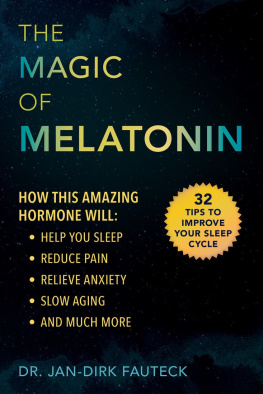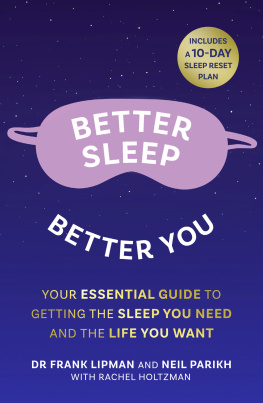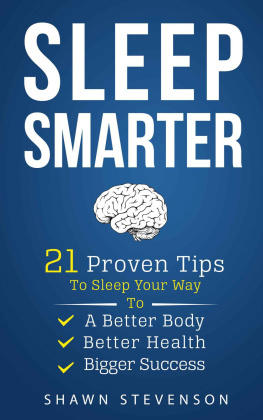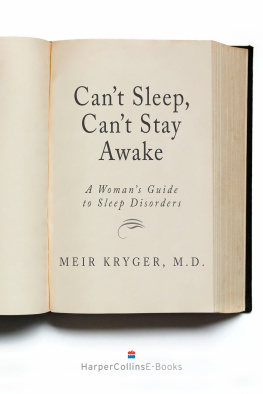The Mystery of Sleep
From the Editors of Scientific American
Cover Image: Adam Kuylenstierna/EyeEm/Getty Images
Letters to the Editor
Scientific American
One New York Plaza
Suite 4500
New York, NY 10004-1562
or editors@sciam.com
Copyright 2019 Scientific American, a division of Nature America, Inc.
Scientific American is a registered trademark of Nature America, Inc.
All rights reserved.
Published by Scientific American
www.scientificamerican.com
ISBN: 978-1-948933-04-9


THE MYSTERY OF SLEEP
From the Editors of Scientific American
Table of Contents
Introduction
by Lisa Pallatroni
1.1
by Ken A. Paller and Delphine Oudiette
1.2
by Robert Stickgold
1.3
by Louisa J. Steinberg
1.4
by Veronique Greenwood
To Sleep, Perchance to Learn?
Riddle: How does someone go for 8 days without sleep?
Answer: that person sleeps during the night. (For insomniacs, we would also accept not very well.) The reason we need sleep has long mystified scientists, but its crystal clear that we do need it. Studies show that even one night of disturbed rest leads to measurable impairments, and for this mini-collection, we gathered the most recent research on the mechanisms of sleep.
As Harvard sleep guru Robert Stickgold writes, the more scientists find out, the more they discover new benefits brought to us by Mr. Sandman. Stickgold reviews the latest studies of hormone balance, immune function, emotional and psychiatric health, learning and memory as well as clearing toxins from the brain. Building on studies of memory, Ken Paller and Delphine Oudiette show that odors and sounds can be used to enhance the memory reinforcement that occurs during sleep, which raises exciting possibilities for sleep learning. Louisa Steinberg offers a counterintuitive solution for lifting mood in people with major depression: short-term sleep deprivation. Finally, for the chronically sleep-deprived, Veronique Greenwood presents evidence of a genetic mutation that could be behind a common form of insomnia called delayed sleep phase disorder . Though far from a potential treatment, every piece of information inches us toward a more complete understanding of how sleep works as well as how to manipulate it.
- Lisa Pallatroni
Book Editor
Sleep Learning Gets Real
by Ken A. Paller and Delphine Oudiette
In Aldous Huxley's Brave New World, a boy memorizes each word of a lecture in English,a language he does not speak. The learning happens as the boy sleeps within earshotof a radio broadcast of the lecture. On awakening, he is able to recite the entirelecture. Based on this discovery, the totalitarian authorities of Huxleys dystopian world adaptthe method to shape the unconscious minds of all their citizens.
Sleep learning turns up throughout literature, pop cultureand ancient lore. Take Dexter, the lead character in the animatedtelevision series Dexters Laboratory. In one episode, Dextersquanders his time for homework, so instead he invents a contraptionfor learning to speak French overnight. He wakes upthe next day unable to speak anything but French. The idea ofsleep learning isnt just a modern invention. It also appearswithin a centuries-old mind-training practice of Tibetan Buddhists;a message whispered during sleep was intended to helpa monk recognize the events in his dreams as illusory.
Everyone knows we learn better when we are well rested.Most people, however, dismiss the notion of sleep learning outof hand. Yet a set of new neuroscientific findings complicatesthis picture by showing that a critical part of learning occursduring sleep: recently formed memories resurface during thenight, and this playback can help reinforce them, allowing atleast a few to be remembered for a lifetime.
Some studies have even explored whether sleep might bemanipulated to enhance learning. They reveal that sleeps programfor making daytime memories stronger can be boostedusing sounds and odors. Results in rodents have even demonstrateda primitive form of memory implantation: using electricalstimulation while animals slept, researchers taught themwhere they should go in their enclosures on awakening. Huxleysimagined version of sleep education, in which entire textsare absorbed verbatim during the night, is still relegated to thepages of his 1932 classic. But experiments now indicate that it ispossible to tinker with memories while a person is immersed inthe depths of slumber, creating the basis for a new science ofsleep learning.
The Psychophone
For these techniques to work, scientists have to explore howinformation can be absorbed when consciousness is seeminglyon a well-deserved break. Around the time that Huxley was writingBrave New World, serious explorations into the possibility ofmeddling with sleep had begun. In 1927 New Yorker Alois B. Saligerinvented an Automatic Time-Controlled SuggestionMachine, which he marketed as the PsychoPhone, to allow arecorded message to be replayed during the night. The setupseemed to evoke Huxleys imagined technology except that theuser, rather than the state, could select the message to be played.
Saligers invention was followed, in the 1930s and 1940s, bystudies documenting ostensible examples of sleep learning. A1942 paper by Lawrence LeShan, then at the College of William &Mary, detailed an experiment in which the researcher visited asummer camp where many of the boys had the habit of bitingtheir fingernails. In a room where 20 such boys slept, LeShanused a portable phonograph to play a voice repeating the sentenceMy fingernails taste terribly bitter. The string of wordsrecurred 300 times each night, beginning 150 minutes after theonset of sleep. The experiment continued for 54 consecutivenights. During the last two weeks of camp, the phonograph broke,so the intrepid LeShan delivered the sentence himself. Eight ofthe 20 boys stopped biting their nails, whereas none of 20 otherswho slept without exposure to the recording did so. These earlyefforts did not use physiological monitoring to verify that theboys were really asleep, though, so the results remain suspect.
The whole field took a severe hit in 1956, when two scientistsat RAND Corporation used electroencephalography (EEG) torecord brain activity while 96 questions and answers were readto sleeping study participants. (One example: In what kind ofstore did Ulysses S. Grant work before the war? Answer: Ahardware store.) The next day correct answers were recalledonly for information presented when sleepers showed signs ofawakening. These results led to a shift in the field that persistedfor 50 years, as researchers began to lose faith in sleep learningas a viable phenomenon: participants in these experimentsappeared to learn only if they were not really sleeping wheninformation was presented to them.
Most scientists during this time tended to avoid the topic ofsleep learning, although a few researchers did plug away at askingwhether sleep assists in remembering new information. Onetypical study protocol probed whether overnight sleep deprivationaffected recall the day after learning something new. Anotherasked whether remembering was better after a nap than afteran equal period of time spent awake.
Various confounding factors can interfere with such studies.For example, the stress of sleep deprivation can harm cognitivefunctions that then decrease memory recall. Eventually cognitiveneuroscientists began to tackle these challenges by bringingtogether evidence from multiple research methods. A substantivefoundation of evidence gradually accrued to confirm thatsleep is a means of reviving memories acquired during the day,reopening the relation between sleep and memory as a legitimatearea of scientific study.

